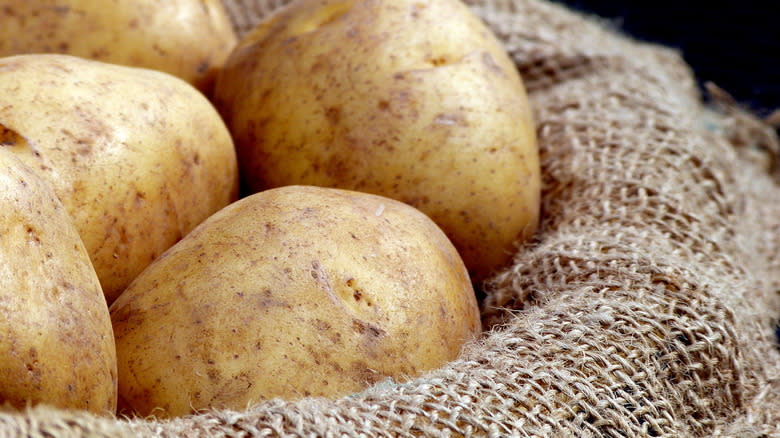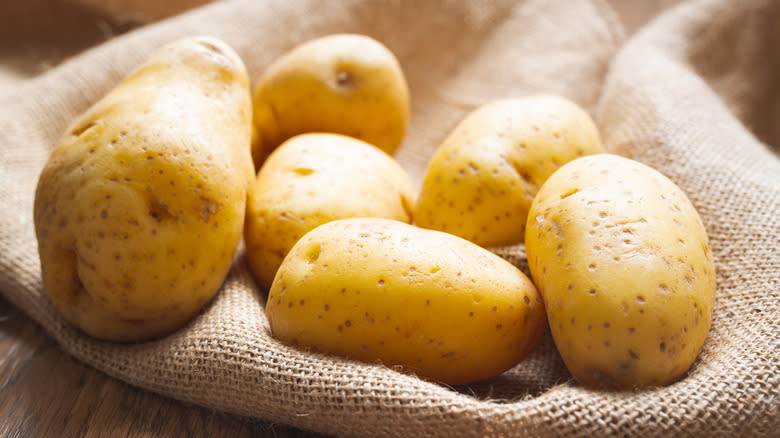When To Cook With Waxy Vs Starchy Potatoes

The humble potato is one of the most basic staple foods in existence. One of the biggest crops to make the journey from the western hemisphere to the eastern one, potatoes have had a place in global cuisines ever since. (Also, one time, Boeing filled a passenger jet with potatoes for legitimate scientific reasons.) Anyway, one potato is pretty much as good as another when you're cooking, right? It doesn't make a difference which one you use in a recipe.
Wrong! There are dozens of different varieties of potatoes, and they all bring benefits and drawbacks to the table. In general, potatoes break down into two main categories: waxy and starchy. But when do you want to use one over the other? It ultimately comes down to whether you want the potatoes to hold their shape or to collapse. Starchy potatoes are better at breaking down in recipes, while waxy potatoes are better at holding their shape.
Read more: 12 Vegetables And Fruits That Used To Look Very Different
What Does Waxy Vs. Starchy Mean?

First, it's important to understand what we mean when we talk about "waxy" vs. "starchy" potatoes. Starchy potatoes, including varieties such as sweet potatoes and the ever-popular russet, are high in starch and low in moisture (hence the name), but more importantly, they're low in sugar. This lack of sugar causes them to break down more quickly when cooked, making them ideal for any situation where you want that fluffy internal potato texture, such as mashed potatoes, baked potatoes, and french fries. McDonald's famously only uses a few varieties of russets for its fries and hash browns to ensure consistency across locations.
Waxy potatoes, meanwhile, are the opposite: higher in moisture and sugar but lower in starch. They tend to hold their shape better than starchy potatoes, meaning they're ideal for soups, stews, or au gratin, where you want the potato to hold its shape. They also tend to have thinner skins than starchy potatoes. Some types of waxy potatoes that are commonly available include red potatoes, fingerlings, and baby potatoes.
There's A Third Category Of Potato Consisting Of One Type

Interestingly, there is a third category of potato: all-purpose potatoes, which are essentially halfway between waxy and starchy and are intended to potentially serve both purposes. There's only one potato belonging to this group: the Yukon gold, one of the best-ever examples of humankind's commitment to crop experimentation.
The Yukon gold isn't a naturally-occurring variety; it's the result of a 30-year experiment by a man named Gary Johnston. Johnston's team of scientists in Canada spent decades cross-breeding potatoes to try to get one that combined the qualities of both waxiness and starchiness, deliberating trying to create a larger version of "papa amarilla," a Peruvian golden potato cultivar. Eventually, they succeeded, introducing an entirely new category of potato to the world.
The key with potatoes, as with any other food that has numerous sub-types, is to know your ingredients. Waxy vs. starchy potatoes will yield radically different results in the same recipe, so make sure you're using the correct one to get the dish you want.
Read the original article on Daily Meal.
